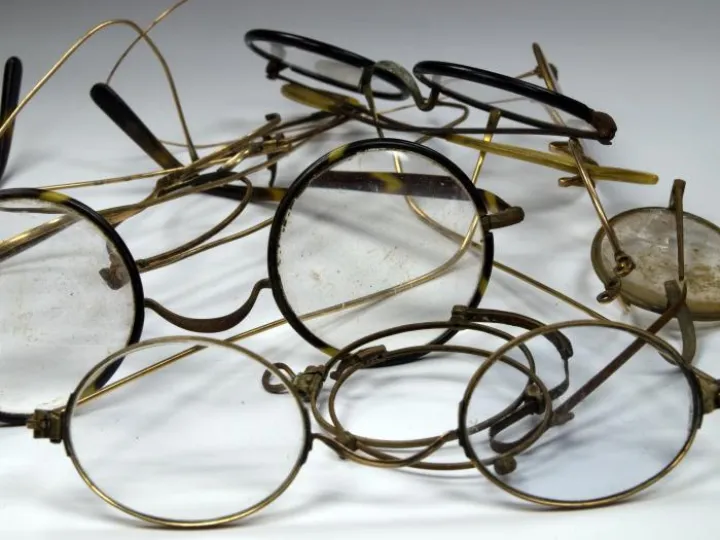Repairing damaged lenses
Wide array of lens options
Repairs to damaged sunglasses lenses are a regular feature of the spectacle repairs work for the specially trained staff at AphaOmega Glasses Repair. We like customers to understand the basics of sunglasses lens repair so they can better appreciate what to look out for when choosing spectacles and sunglasses and what to expect from the products on offer.
It also helps us meet our customers' demands if they first understand what types of sunglasses are available on the market and how well the different materials perform. There is a large, and to many a bewildering, array of sunglasses lens types available today as each manufacturer tries to steal a competitive advantage in a very crowded marketplace.
The days when sunglasses were darkened to cut out sunlight rays are long behind us and all for the better, not only for the protection of our eyes but also for style and comfort.
The lens type may be only one option when buying sunglasses, but it is one of the most important.
Polarising Lenses
Sunglasses with polarised lenses help to reduce the type of glare that is mainly caused by strong reflections off horizontal surfaces. Most polarising sunglasses lenses on the market today will block out light waves that travel horizontally and only let through vertically aligned light waves, thus reducing glare without affecting general visibility.
Polarised lenses can be suitable for driving and wearing in outdoor environments where you are likely to encounter a lot of reflected light off horizontal surfaces, such as in the snow, on water or wide sandy beaches. It's essential to combat prolonged glare as it not only impairs vision directly but can also cause eyestrain, trigger headaches, and even, in extreme conditions, cause temporary blindness.
Polarised lenses are often advertised heavily by manufacturers of modern sunglasses and usually come in a neutral grey or brown tint, although many colours and tints are also available. But don't assume that all polarised lenses offer protection against ultraviolet rays. UV protection and polarisation are different, so check the UV protection rating before purchasing sunglasses.
Photochromatic Lenses
Sunglasses with photochromatic lenses are acceptable for general holiday wear, especially for those expecting to be outdoors for long sunny spells. Photochromatic lenses have a special chemical coating that will darken the lens in bright sunlight and make it lighter in darker environments or where there is little ultraviolet light.
The transition times of photochromatic lenses, from light to dark and vice versa, can vary considerably, but they will always take time to adjust to new lighting conditions. This is why photochromatic sunglasses are of little use for night driving. The headlight glare from oncoming cars usually passes by the time the sunglasses have adjusted, while the protection from UV light is negligible as very little UV light will pass through a car windscreen in any event.
Mirrored Lens Coatings
Sunglasses with mirror lenses are often favoured by the young, sportsmen, and women. They may look cool, but they work by reflecting light away from the eyes instead of absorbing or filtering it, as in regular sunglasses. This makes mirrored lenses ideal for high altitudes on snow-covered slopes with lots of reflected light and few clouds.
For example, skiers and high-altitude climbers will find them a perfect choice. Mirrored lenses are not so useful in normal conditions. They reflect so much visible light away from the eye that they make the world look dark. Detail can be lost unless there is lots of reflected light. Most mirrored lenses also scratch very easily and need a scratch-resistant coating, adding to the expense.
Graduated or Gradient Lenses
These popular lenses are darker at the top, gradually fading to a lighter shade at the bottom. Graduated tints are suitable for night driving as the upper lens area blocks out headlight glare, while the lighter lower area makes it easier to see the car's dashboard control. Graduated tinted lenses often look good on oversized or aviator-style frames.
Coloured and Tinted Lenses
Lenses in modern sunglasses come in many colours and tints. The choice is usually down to personal preference, but the conditions in which they are most likely to be worn can play a part. For example, grey and brown tinted lenses are well suited for general use on bright days with clear, sunny weather.
They reduce the amount of light reaching the eye without any colour distortion. They can also improve depth perception while retaining detail. Green lenses also have relatively low colour distortion and are similarly suitable for general, clear-weather use. Green-tinted sunglasses may be preferred when the light levels are variable, as visibility is usually good in bright and cloudy conditions.
Orange, amber and yellow-tinted lenses screen out blue/green light, making them more useful in misty conditions and helping to brighten the view on dull days. It is why many modern street lamps have an amber glow. They can increase contrast by making darker colours look more 'black', so expect darker details to be lost.
Like amber and rose, red lenses filter out the blue/green colours and increase contrast. They are often helpful when the sun is low in the sky, say at sunrise and sunset, or in relatively low lighting conditions. Some researchers say blocking blue light at night can help improve melatonin levels, leading to better sleep. They are sometimes recommended for users of brightly lit computer screens.
Blue-tinted lenses have been shown to help some sufferers of migraine and even dyslexia, but most opticians warn against blocking specific colours. Tests have shown that the standard red road traffic light is indistinguishable for car drivers wearing a particular shade of blue-tinted glasses.
It is important to note that colour and tint do not reduce dangerous UV light levels. Dark-tinted lenses without UV filters can be worse than not wearing sunglasses at all. The pupils dilate to compensate for low light, allowing more damaging UV light levels into the eye.
Coated Sunglass Lenses
Modern sunglasses can come with all sorts of lens coatings. Scratch-resistant coatings, for example, can be applied to the front and back of lenses during manufacture. Although no lens is entirely scratch-proof, this special coating does make lenses harder to scratch when dropped or accidentally rubbed against a hard surface.
But perhaps the most critical coating is the Ultraviolet treatment to protect against harmful UV rays. It is known that harmful UV lights can accelerate the development of cataracts and other eye complaints that can eventually lead to blindness, such as macular degeneration. As UV treatment is easy to apply and relatively cheap, there is no reason not to ensure that the sunglasses you purchase come with 100% protection against UV radiation.


